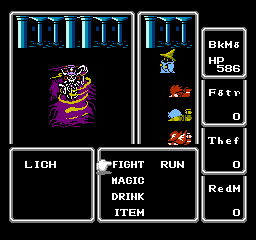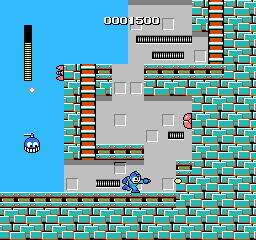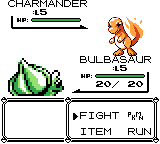Trending
Opinion: How will Project 2025 impact game developers?
The Heritage Foundation's manifesto for the possible next administration could do great harm to many, including large portions of the game development community.

Featured Blog | This community-written post highlights the best of what the game industry has to offer. Read more like it on the Game Developer Blogs or learn how to Submit Your Own Blog Post
In this post, we'll look at the basics of game progression by examining the ways we can express character growth in games.

Throughout game development, game designers must ask themselves:
"How do I play my game?"
"As a player, what am I trying to accomplish?"
"What obstacles are preventing me from accomplishing my goal?"
"What do I want the primary player experience to be?"
By answering these questions, a designer can rough out the “journey” that they intend the player to experience. This path become the foundation for a game’s progression and drives the player from the beginning to the end of a game.
Game progression is the process of defining and reinforcing progress to the player through a game’s systems and mechanics.
Defining means that the game designer must clearly state goals to the player. Reinforcing means that the player has to be aware of how close or far they are from their end goal.
Game progression tends to run in parallel with the Intensity Curve, an implicit map of the peaks and valleys that make up a given experience. I won’t be talking about this curve in this post but it’s good to be aware of it.
Before we go further into this topic, I would like you to forget about genres. While genres are a useful tool for figuring out taste and marketing a game, it hurts the conversation when discussing what a game is doing under the hood.
With that said, let’s jump into the basics of game progression by examining it on the micro level through character progression.
Character progression is the use of mechanics to reinforce growth and/or progress to the player via the player’s avatar(s).
Game progression tends to fall into two camps: horizontal progression and vertical progression. In order to help illustrate these concepts, I’m going to use well-known games/series and examine them in terms of character progression:




Horizontal progression is when progress is primarily measured in terms of OPTIONS.
For example, in Final Fantasy a Black Mage buys their spells. In the first tier, the mage can acquire Fire or Thunder.1 These spells are virtually the same in terms of power but depending on the enemies the Black Mage encounters, these options give him more flexibility and an potential advantage over enemies.
In Megaman’s case, his progression is primarily shaped through the weapons he gets from defeating bosses. Each weapon may differ in attack power, but their primary strength is the options they give the player when they encounter level puzzles, enemies, secrets, and even other bosses. In Pokémon, horizontal progression manifests as a trainer’s party and each Pokémon’s move set.
Horizontal progression’s strength is that it gives the player tools to work with and then presents the question “How can I use these options effectively?” to them. Tools reinforce progress by adding strategy to how players tackle obstacles and get from point A to point B. The draw is not necessarily how powerful each tool on its own is but how powerful the player can make them based on the situation and their own cleverness.
The downside to horizontal progression is that if you give the player options that feel useless, or too many options without context, it harms the game experience.
Vertical progression is when progress is primarily measured in terms of SCALE.
For example in Final Fantasy and Pokémon, your party’s’ stats increase as they fight enemies and level up. A Black Mage’s Fire spell can become Fira and Firaga which are just better spells. In Super Mario Bros, when Mario gets a Mushroom, he becomes bigger and gets an extra “hit point”.2 In Megaman X, you can get a “Life Up” item that increases your Health Bar permanently by a few points.
Vertical progression’s strength is that it provides a very clear picture to the player that they are getting stronger. And as game designers, we can reinforce this by presenting them with harder situations and older ones based on how strong the player is. The satisfaction of dominating an enemy that gave a player trouble early in the game is rewarding and easy to create.
The downside to vertical progression is that if a player has the same skills without much change outside stat increases, they may get bored. Also, the game may reach a point of “turning it up to eleven”, weighing down development by making developers create bigger and bigger encounters or upgrades to compensate for the progression.
When applied to macro-level game progression, horizontal and vertical progression tends to get blurred. Most games mix their horizontal and vertical progression per concept in order to get the best out of both styles. The result is a well-rounded feeling of progression that reflects the character(s), themes, and the designer’s intent. Here are some examples:
The Fire Flower in Super Mario Bros. can be looked at as an upgrade/reward from the first item in its vertical progression, the Mushroom. However, it also offers horizontal progression since it gives the player an additional option (Fireballs) to work with and can appear even when Mario is at his tiniest.
While a mage can get a spell virtually at any time3, the game requires a certain amount of money in order to buy them. In most cases money is acquired by getting Gil which comes primarily from fighting enemies which in turn raises a character’s level (vertical progression). This system creates a nice gameplay loop while leveraging the strengths of both progression styles on the micro and macro level.
In the Megaman X series, a player can find armor parts that make X objectively stronger and/or give X more options in terms of how he could fight enemies. The interesting thing about these parts is that some of them required X to have certain weapons or abilities in order to find them, encouraging the player to defeat bosses.4
In Pokémon, if you keep a Pokémon from evolving, it will learn more moves (options) faster and may even learn moves exclusive to that evolution. The downside is that it that they may not be as powerful (scale) as their evolved counterparts. The Inverse is true if a trainer decides to evolve their Pokémon early or when they should evolve. The ability to give the player this much agency as far as which progression is being prioritized is probably one of the many reasons why the game is so popular.5
Game progression is a very complex topic that needs to be examined on a case by case basis with games. I hope that by understanding how progression can work on a micro level through characters, you can apply it on the macro level of the entire game experience.
1. Depending on how much of a purist you are about the endless retranslations of Final Fantasy’s spells they could be FIRE and LIT, Fire1 and Bolt1, Fire and Thunder, etc.
2. It balances out because it prevents Mario from going under really tiny areas
3. Provided they can find them in the world and they are not restricted to Wizards
4. Another interesting note is that defeating bosses changed how other levels would be constructed which is another amazing use of combining horizontal and vertical progression on a micro/macro level. For example, if you beat Chill Penguin’s stage and then go to Flame Mammoth’s stage, all of the lava level hazards will be frozen!
5. And let’s not forget about EVs either!
Read more about:
Featured BlogsYou May Also Like